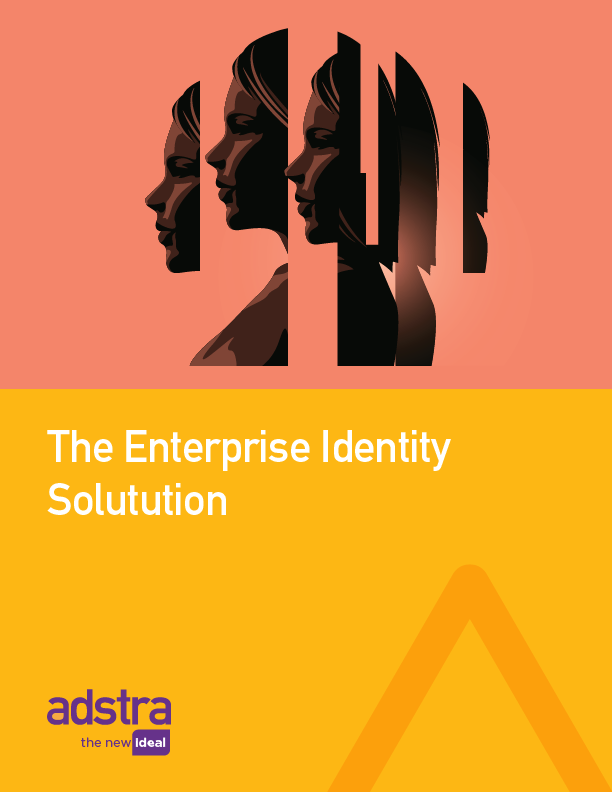By Paroma Sen On Sep 8, 2021
Andy Johnson, Chief Data Officer at Adstra expands more on the core challenges marketers face with their data management and measurement processes while highlighting a few best practices that can help:
_______
Welcome to this MarTech Series chat Andy, tell us more about Adstra and its growth story over the last few years…
Thanks for inviting me to join you in this MarTech Series chat!
Adstra was born from an observation that our CEO Rick Erwin, myself, and a few colleagues had that companies were not effectively able to use data across all forms of media because of the technical and business constraints of the existing vendors in the data and identity space. Having experienced firsthand the challenges the largest players have with fundamental change, we set out to build the next-generation data company. Rather than starting from ground zero, backed by private equity, a group of us bought ALC, a leading data brokerage and management firm, to serve as the foundation of our new company. We soon rebranded as Adstra, and refer to ourselves as the first data bureau focused on enabling and orchestrating data by connecting data in any form from one media to another.
As we began the roll out of our new data company, we quickly realized that the limitations we observed were only a symptom of a larger problem. Specifically, that companies lacked the ability to recognize and control marketing to their customers across media. Their objective was customer journey and experience management, but without the ability to recognize customers, it was tactically impossible to execute across media. Companies needed to own and control the management of their customers’ identities across all media. Since our solution was always designed to connect data at a person-based and privacy-compliant level across media, it was a natural extension for us to begin addressing this bigger challenge.
Rather than looking at identity management as a resolution service, we saw the problem differently – an effective identity management solution was at the intersection of technology + capabilities + content. The end design did not need to be built from scratch, but rather could leverage the best solutions that exist in the market today.
On the technology front, we use the best cloud-based technology in the market to manage and deliver our data, be it Google, Azure, or any other cloud tech stack. The key capability is the network of data collection points, be they identity, demographic or intent data signals, and the ability to combine these data points and assign them persistently to an individual.
The content is the data itself, either 1st, 2nd or 3rd party data, and the associated scale and accuracy of the data. And again, we look to bring the best of the “essential data” to bear and enable each company to bring in their own unique and high-value data to the table as well. The end result is that each brand, using our persistent and connected data, is able to build the identity solution that works best for their needs.
We’d love to hear more on your recent partnership with the Allant Group?
We are truly excited about our partnership with Allant. A successful identity management solution for any brand is derived from the intersection of technology + capabilities + content. The core of our success is in what we described as the data capabilities component of the equation. We also have the ability to deliver a high degree of value in the content portion through our essentials data.
The technology component, however, often serves as a challenge for many companies. While we can stand up our platform on our own cloud-based technology, many companies are looking to work behind their own tech firewalls. The answer for many has been the development of their own CDP solutions. This is where Allant fits in as a great partner. They can help companies take advantage of the best fit technology, provide the ongoing service and maintenance of that technology, and integrate in Adstra’s identity data content into the end solution quickly and cost-effectively.
The end result is a solution for companies that can stand up over time, even in the face of changes like cookie deprecation, and which enables companies to achieve their objectives of effectively managing their customer interactions across media.
As the growth for data-driven marketing processes and solutions take center stage, in what ways are you seeing marketing teams cope by enhancing their strategies and tools with what they feel is ‘’the right data’’? A few observable challenges you keep noticing here?
In looking at marketers’ challenges in data-driven marketing today, I see two areas where they are looking to enhance their strategies and tools. And I would not characterize either as addressing the “right data” but rather “actionable data”.
I always recall the adage that 50% of something is better than 100% of nothing. The first area is in filling in the data gaps, especially when looking to extend audiences into new realms and media. Typically, no single source of data can be complete, be it 1st Party or 3rd Party data. The challenge is to effectively combine the data sets into a more complete view of the customer at a scale that matters.
Back to the last question, this is where we see companies invest in CDPs to help in this consolidation. Given the cost of data management, it also requires a more honest assessment of what data and what data gaps in turn matter. Rather than taking it all in, we are seeing companies starting to interrogate the value of their data and develop new strategies to build out the most effective picture of their customer. It’s the combination of demographic, transaction and intent based data at an individual level that enables a company’s marketing models and segmentation approaches on a consistent, compliant, and scalable basis.
The second area is one that we see many companies attempting to tackle, but there are limited options to address. Our solution is one of the few that can. This is the challenge of managing data consistently across the known and unknown/ anonymous world of customer identity. Many of a company’s touchpoints with a customer occur in the unknown world, rendering many of their marketing tools and capabilities ineffective. There is a high degree of frustration around the ability to activate against audiences and attribute media spend in digital and social advertising outside the big tech walled gardens. Companies are looking for data on the unknown customer so they can more effectively market, much like they can in the known identity world.
What best practices should marketers today follow to optimize campaign performance of their brand’s reach and campaign returns with better data and insights? Can you dive into the top metrics that should be the focus in today’s environment?
Let me try and answer these in reverse order.
On the question of metrics, companies should remain focused on the traditional top metrics they always have been to evaluate the success of their business and their marketing programs… # newly acquired, cost per acquisition, return on ad spend, retention rate, % up sell, lifetime value are the typical top line metrics marketers manage to. The use of data in driving marketing decisions is focused on improving those metrics. The challenge of course has been the ability to actually calculate these metrics across media. Too often marketers rely on directional surrogates to justify the impact of data. Increased impressions, higher click-through rates, email open rates, etc are some of these surrogates. If you can directly correlate these metrics on a causal basis to the top line metrics, great.
But that typically requires the ability to connect the activity to the result to show causality. Right now, we see marketers managing to averages instead. On average for every 100 email opens, I get one sale. Averages do not necessarily reflect what you can expect the next time, they are less predictive. And this is where I bring you back to the first part of your question… what are best practices to optimize reach and return?
Best practices are to connect the data from each customer touchpoint, media impression or transaction back to an individual identity so you connect actions to results. It’s all about measurement of activity. The challenge is to do so at scale with economics that work for the business.
The costs associated with measurement should not exceed the incremental value created. The way to manage costs down is to have a clear plan on your measurement approach prior to execution and having a consistent and persistent approach to data connection. Historically, marketers have used straightforward A/B testing to evaluate impact. Some have gone further using multivariate testing. These solutions, while useful, are point in time solutions and do not offer the ability to look at the data and audiences postmortem. Where marketers are able to connect action to results directly, they are afforded the opportunity to interrogate every campaign after the fact to uncover new opportunities to optimize their approaches. They are also able to quickly see changes in behavior that would allow marketers to adjust campaigns faster to improve results once again.
A few thoughts on the future of data and insights driven marketing? What should marketing leaders and upcoming marketing executives do to improve their data concepts and skills?
Overall, we believe the future of the data and identity management role in marketing is strong and getting stronger going forward. Technology, experience, and growing standards are making it possible to use data across media in ways that were never possible before. Two thoughts that I can offer to marketing executives:
First and expanding on the previous question, a big change marketing executives can make to take advantage of these changes and improve results is to rethink their approach to measured media. For magazines, media has historically been measured through MRI and for television it has been Nielsen ratings. For almost every industry there is an equivalent. These companies offer their respective industries the ability to gain insight and measure performance by making “panels” available to marketers that are supposed to represent the average customer.
The world simply does not work that easily anymore. Nielsen is going through some major overhauling as they address the impact of delayed viewing and now the explosion of content through streaming media. How does any panel-based company ensure their panel is representative of the average customer and in turn the average result? It’s almost impossible in today’s world.
Most marketers know this but have failed to change because it is hard to change, and they don’t have confidence in an alternative approach. This is where the new approaches of data connection we have described come into play. We no longer need panels to represent an audience when we can evaluate an entire audience now at a scale that makes economic sense. If marketers shift to a true audience approach, where the audience is connected to the end result, the data should drive the optimal answers for marketers.
Second is around this concern around the deprecation of 3rd Party cookies. Many of the concerns are well founded, given the statements made by Google, Apple and Mozilla. That being said, we do not believe this should be an end to sound data-driven marketing processes and analysis. As I have noted, what marketers and brands want, and need is control and ownership of their identity management capabilities. While cookies are a component to an identity management process, they are only one element. Companies who build out a strong identity solution should be well positioned to adapt to any changes that might come in 3rd Party cookies in the future.
Some top martech tools you feel marketers today need to integrate into their overall tech stack and why?
The power of any marketing tool is the accuracy and consistency of the information being passed through the tool. It is the common statement of GIGO. What marketers need to be doing is focus in on the way data is being gathered, connected and passed through their existing martech tools.
If a tool does not have the ability to effectively ingest individual level data and either take action on it or report on it, then we might suggest looking for an alternative. The tools of choice though should match to the needs of the business and the level of resources available to capture the effective value of them. What creates power in a company’s martech tools is the ability to layer in additional and relevant data that gives visibility into customers, customer performance and the key marketing metrics. It starts with a solid identity capability.
Some last thoughts and takeaways before we wrap up!
2021 represents an interesting convergence for marketers. Marketers have long understood that direct-to-consumer (DTC) marketing offers a far more data-driven approach than broad brand awareness approaches, but brand awareness has still dominated most marketing efforts because of the disconnect between the company itself and the point of purchase. Covid has changed the paradigm though. Having been forced to avoid traditional retail establishments, consumer behavior has in general shifted to a far more DTC type of interaction.
Think about how grocery shopping behaviors have changed, for example… more and more consumers are looking for direct home delivery. The end result is that consumer behavior is now better aligned with a DTC approach to marketing. It is creating new opportunities for brands to engage with their customers and improve the overall value delivered. Consumers of course don’t appreciate the challenges some media presents over others in managing a DTC marketing message. It all starts with knowing a consumer’s identity, bridging it across time and media, and applying data to present the right offer at the right time in the right place; the long-held goals of traditional DTC marketers. Companies that embrace this shift to DTC marketing should outperform those that don’t. Brand awareness-based marketing will suffer from continued loss of scale driven by media proliferation and in turn audience bifurcation. Brand awareness will also miss the opportunity of timely and easy gratification that DTC approaches offer.

Adstra is the new model for the data-driven enterprise. Adstra comprises a comprehensive suite of transparent identity and data solutions that are portable, futureproofed, and offered via a subscription-based model that liberates brands to realize the maximum value from their data. Founded in 1978 as ALC, Adstra has evolved as a leader in data innovation. As the first Data Bureau, Adstra enables the flexibility to activate identity management and data capabilities within your existing technology environments. No other data provider bridges the gaps between PII and anonymized data with the same speed, flexibility, cost-effectiveness, and frictionless portability across all media.



